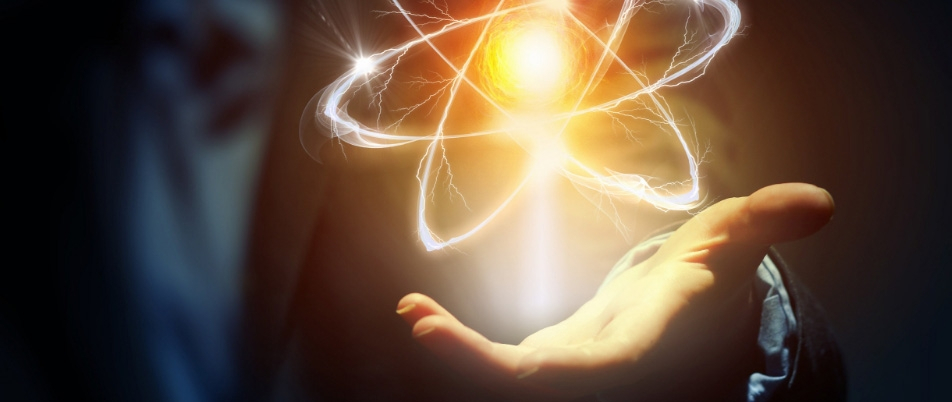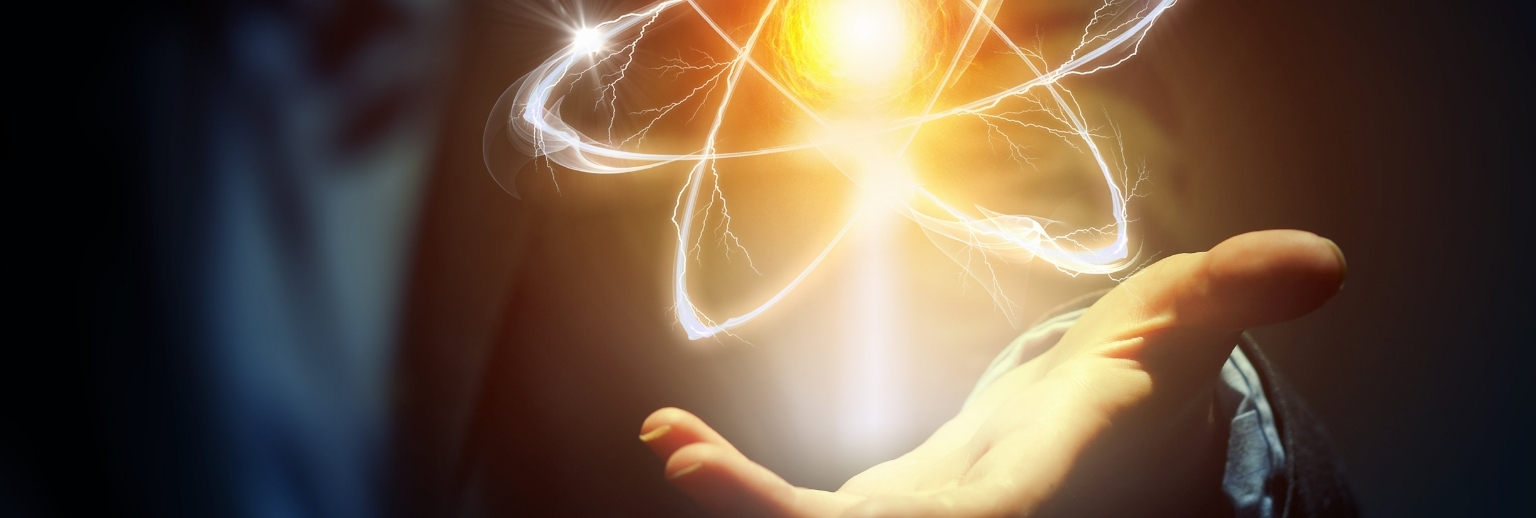History
On March 16, Frederick Lugard, Governer, laid the foundation stone of the Main Building.
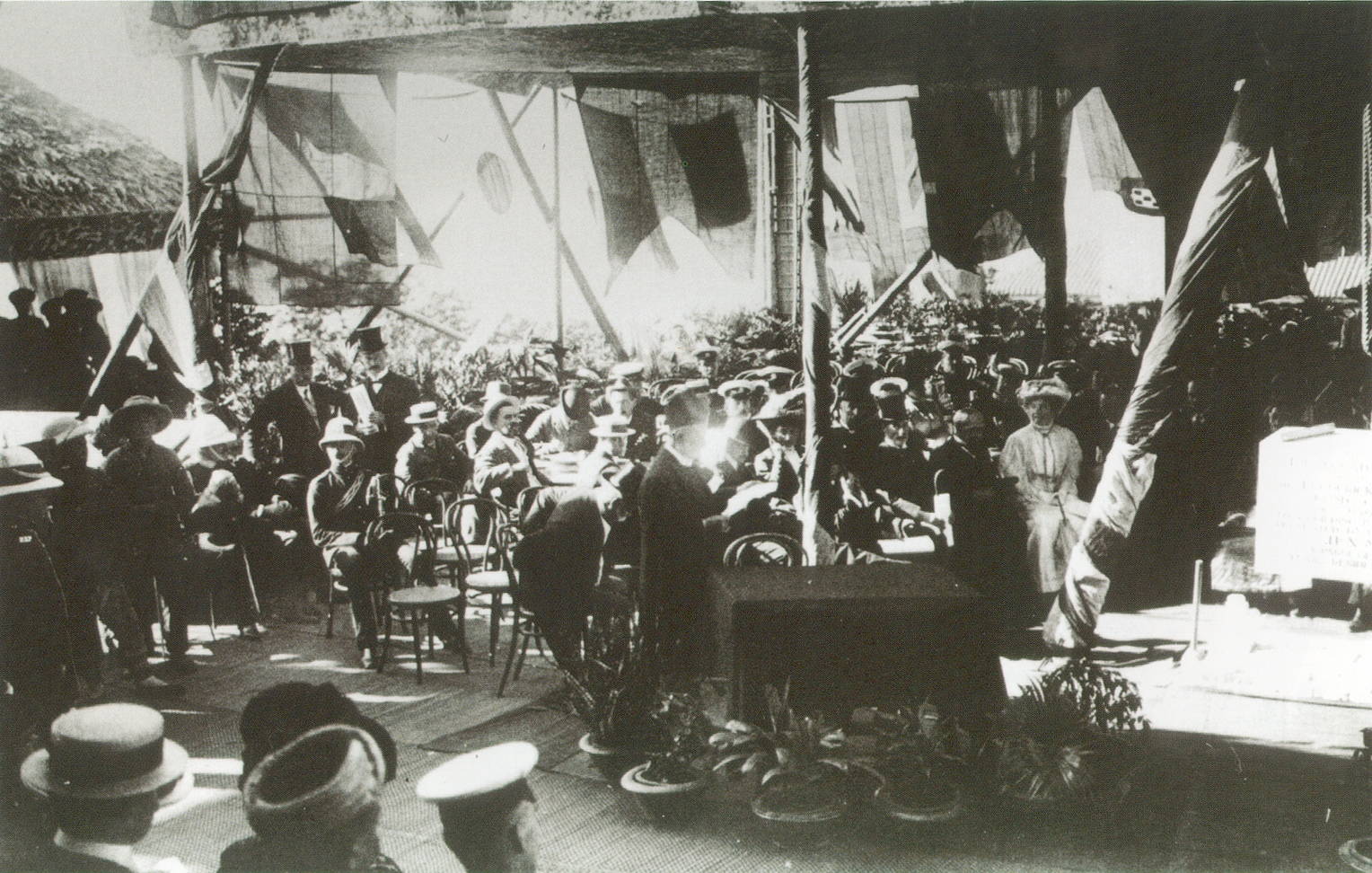
The University of Hong Kong incorporated by ordinance.
A Lecturer in Physics, Matthewman, T.H.1 was appointed as one of the only 2 full-time member of teaching staff by the University in its first year.
Warren, Arthur George2 became the first Head of Department.
Florance, David C.H.3 took over the Headship in February.
Einstein, Albert visited Hong Kong. The grandchirdren of Florance indicated that Florance had met him and taken photos with him.
Sun, Yat Sen visited the University on Feburary 20.
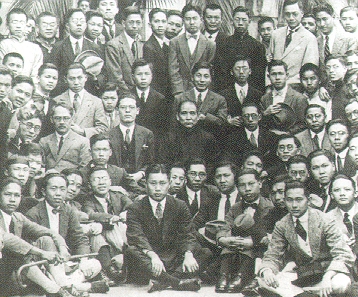
NEXT PHASE
Faid, William4 came to be the Professor and Head of Department as Florance's successor.
Faid became Dean of Arts for 1 year.
The birth of Science Faculty. The Department, then consisted of a Professor, Faid, a Lecturer, Davies, D.F.5, and 3 Demonstrators, Un, Po6, Hui, Pak Mi7 and a new appointee, Yue, Shu Chiu8 joined it.
Founding of the Science Society.
The Department moved from the west wing of the Main Building to the Northcote Science Building.
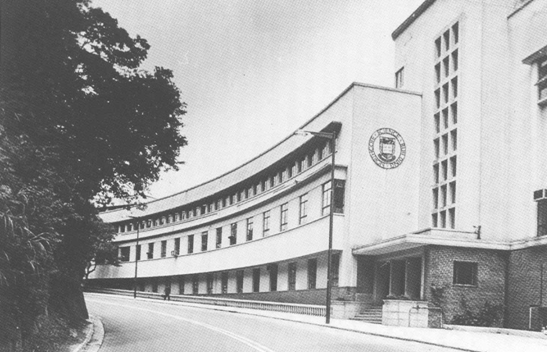
NEXT PHASE
At the outbreak of fighting, the University became the University Relief Hospital and Faid was its Lay Superintendent. He and his wife were interned in Stanley Camp, where he died, in July 1944, having fractured his skull after falling from a roof. He is still remembered by the "William Faid Memorial Prize in Physics" awarded annually to the student passing at first attempt the Final B.Sc. examination obtaining the best result in Physics.
Davies was part of the Royal Navy Volunteer Reserve and so, as a combatant, became a prisoner of war. He escaped, however, from Shamshuipo Prisoner of War Camp and made his way in the company of the Professor of Physiology Lindsay Ride - the first postwar Vice Chancellor - into China and on to India where he spent most of the war.
Un, very early, moved into China and was Associate Professor of Civil Engineering in the National Sun Yat Sen University, at the time in exile in northern Guangdong, moving with them to Guangzhou when the War ended in 1945.
Hui escaped to Macau, where he stayed, with his family, but without a job, until the end of the war.
NEXT PHASE
The University reopened. Davies, Hui and Un returned.
The first member of staff to hold a doctorate degree, Cook, E.O.9 came.
Davies became the Professor and Head of Department.
Davies became the Dean of Science until 1952.
Un was appointed as Head of Department in May and Davies was encouraged to leave the University.
Hui and Un were promoted to Lecturer, and between them managed the Department for the 2 years that the Chair was vacant.
Parsons, R W10 came to be the Chair.
The first refereed publication with the departmental byline was a paper in conjunction with Parsons publishing in the Journal of Scientific Instruments.
The first graduates receiving a B.Sc. Honours degree in Physics were Chik, Kin Pong11 and Kwan, Sik Hong12.
Un died in early 1959. Parsons left and the Department was under the acting headship of Hui.
Chesterman, William Deryck13 came to be the Professor and Head of Department in January.
4 students first graduated with the Special Honours degree, 2 of them were Ng, Leung Kai14 and Yu, Miu Robert15.
Chesterman became the Dean of Science until 1966.
The first Masters degrees for work done in the Department were awarded simultaneously to Ng and Lee, Hinglun Alan16.
The first Ph.D. from the Department was awarded to Chan, Yin Lui17.
Following Chesterman's departure, Hui was in charge of the Department again, for a period of 6 months until the new Chair, Lyon, Arthur James18, arrived in January.
Hui retired.
NEXT PHASE
The Department moved from the ground floor and basement of the Northcote Science Building on Pokfulam Road to the first and second floors of the Knowles Building.
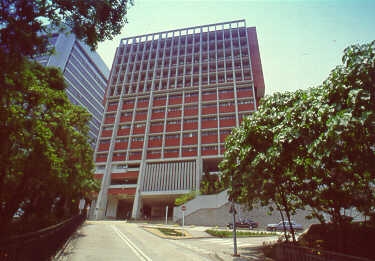
Faculty-wide reform of the curriculum was mandated. The General and Special degrees were then replaced with the single, so called unit degree, an honours degree spread over three years.
First international Physics conference in Hong Kong. Largely sponsored by the Department, it was entitled the "Asian Cosmic Ray Symposium on Secondary Cosmic Rays". Among the 32 participants were delegates from India, Japan, Singapore and Taiwan.
Lyon retired in 1977. Walker, George Oulton19 acted as Head of Department until the arrival of the new professor, Newman, Douglas John20 in January..
The 7th International Symposium on Equatorial Aeronomy, attracting over 70 participants from ten countries was organized by the ionospheric group.
Reid, M F21 came. Reid was of a new generation, fully at home in the modern 'computer culture' and, aided by the technician Yip Kin Hang, did much to bring the Department into the cyber age.
Newman left a year ahead of retirement in 1989. Fung, Peter Chin Wan22 acted as Head of Department during the period between Newman's departure and the appointment of a new chair professor in April, Chau, Wai Yin23.
Cheng, Kwong Sang received the National Natural Science Award.
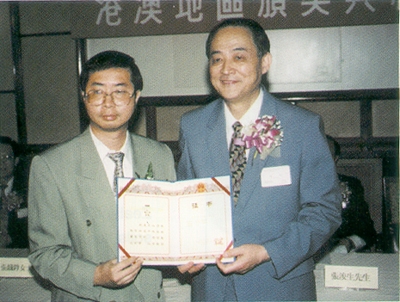
The Department moved from the Knowles Building to a new purposely built Physics building, the Chong Yuet Ming Physics Building - although for several years some floors had to be shared with Earth Sciences and Zoology.
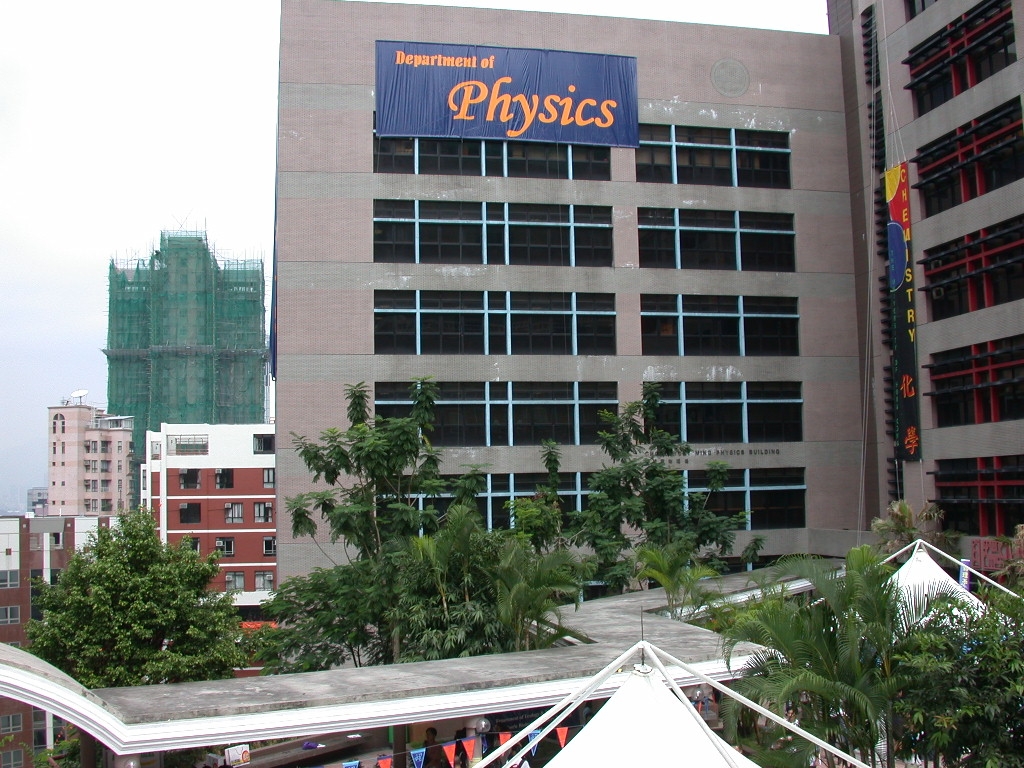
Chau retured to Canada in 1992. Fung, Peter took over as Head until a new Chair, Tong, David Suk Yin was appointed.
Wang, Zi Dan received the National Natural Science Award.
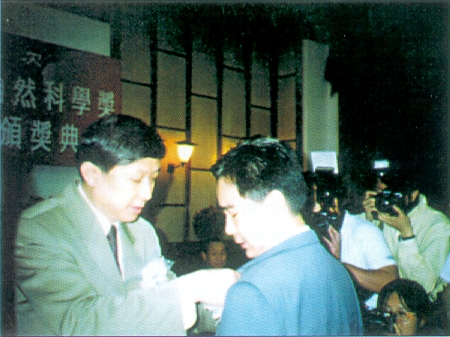
The "Surface Science: Critical Review and Outlook" conference was held here in June.
The 21st Century Chinese Astronomy Conference was held here in August.
The much coveted Doctor of Science degree has been conferred by the University of Oxford on Fung, Steve.
Tong, David received the Croucher Senior Research Fellowship of 1997/1998.
1999 Pacific Rim Conference on Stellar Astrophysics was held here in August.
A visit by Prof. Daniel Chee Tsui (1998 Nobel Laureate in Physics) in December.
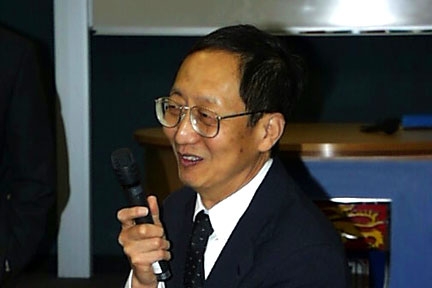
Wang, Jian was a co-winner of the 1999 Achievement in Asia Award (AAA) of the Overseas Chinese Physics Association.
Cheng, K.S. received the Croucher Senior Research Fellowship of 2000/2001.
A public talk delivered by Sir Roger Penrose in April.
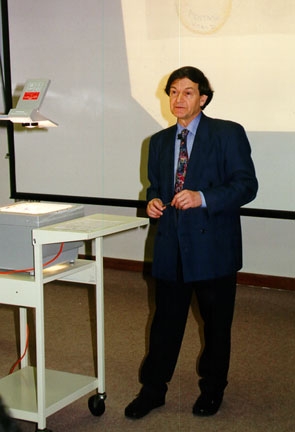
The 26th IUVSTA Workshop on Surface Holography and Other Direct Methods was held here in August.
Cheng, K.S. became the Head of Department.
Cheng, K.S. received the Outstanding Researcher Award of the University of Hong Kong.
Chau, Hoi Fung received the Outstanding Young Researcher Award of the University of Hong Kong.
Our student group winned the third class prize in The 7th Challenge Cup Competition, Xian, China (2001).
Tong, David was elected as Member of Chinese Academy of Sciences and Fellow of the American Physical Society.
The Second Vacuum & Surface Sciences Conference of Asia and Australia was held here in August.
The Workshop of the Theoretical Astrophysics Consortium was held here in December.
Wang, Z.D. received the Outstanding Researcher Award of the University of Hong Kong.
We sponsored The 8th Annual Conference of the Physical Society of Hong Kong and it was held here in June. The first formal workshop on Particle Physics in Hong Kong was held here in November.
The Second Workshop on the Nature of the High-Energy UnidS: The Multiwavelength Approach To Unidentified Gamma-ray Sources was held here in June.
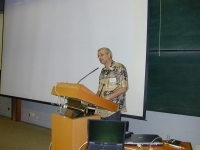
In the same month, together with the Hong Kong University of Science & Technology, we jointly organized the 2nd Asia-Pacific Physics Workshop - Frontier in Condensed Matter Physics.
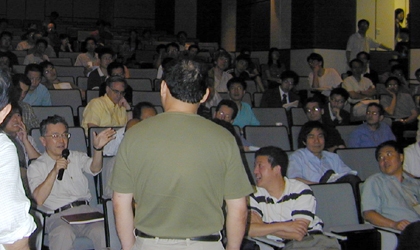
Zhang, Fu Chun becomes the Head of Department.
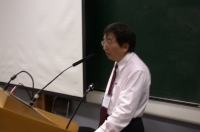
Croucher Advanced Study Institute on Science & Applications of Spin Electronics Workshop was held here in August.
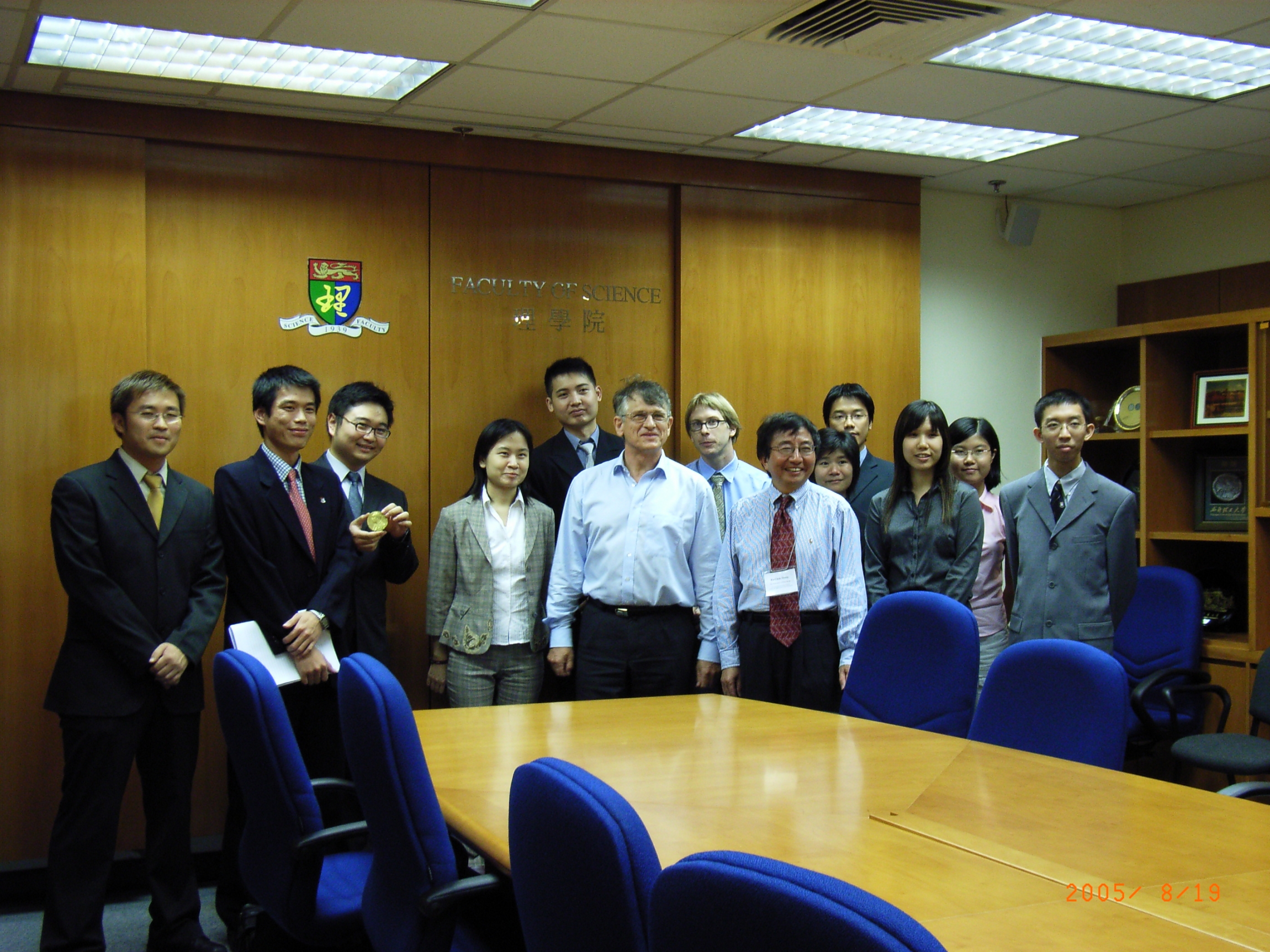
Students are invited to meet the 1985 Nobel Laureate, Prof. Klaus von Klitzing on August 19.
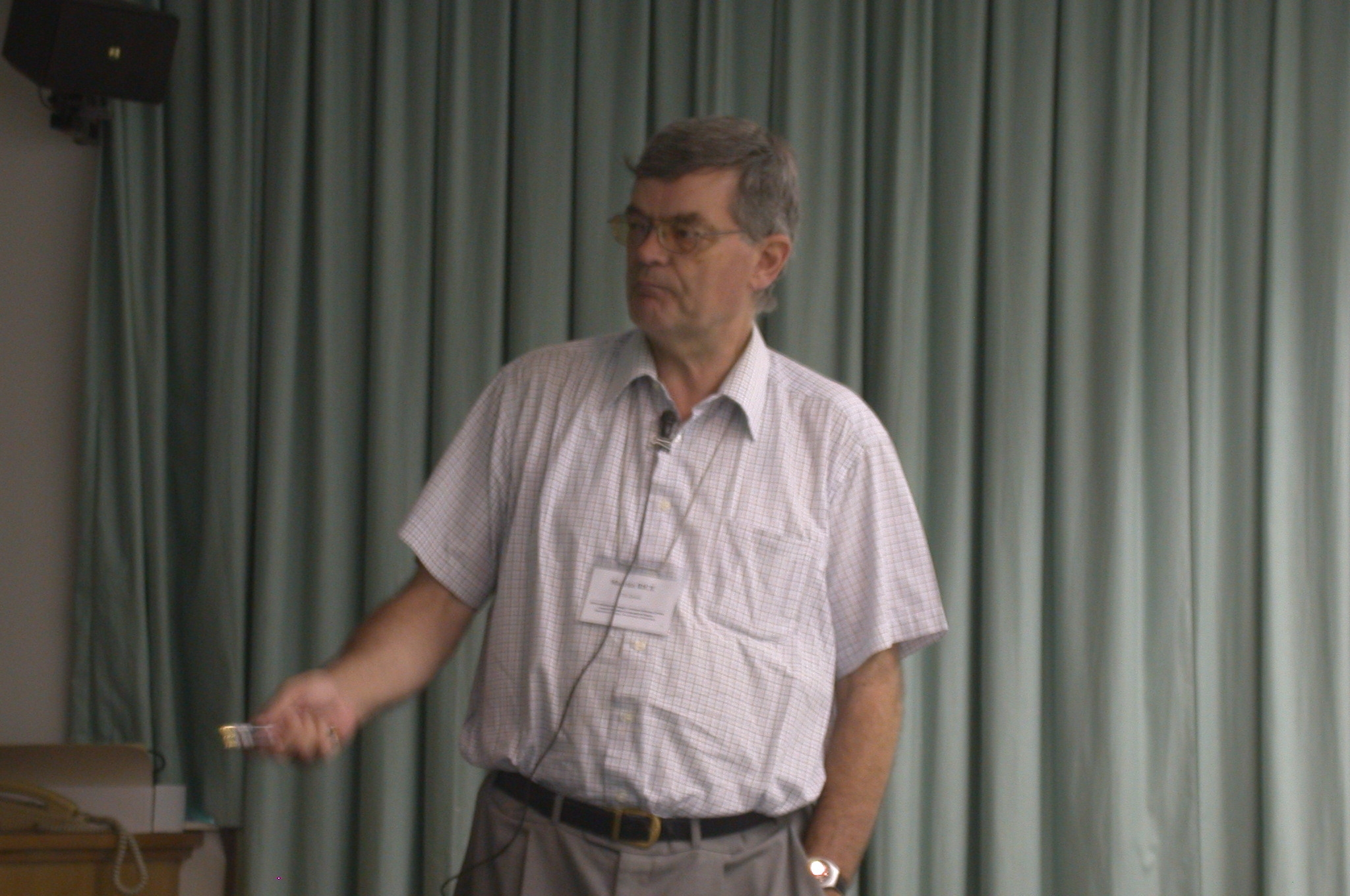
Miniworkshop on Strongly Correlated Electron Systems was held here in November.
Zhang, F.C. received the Distinguished Research Achievement Award of the University of Hong Kong.
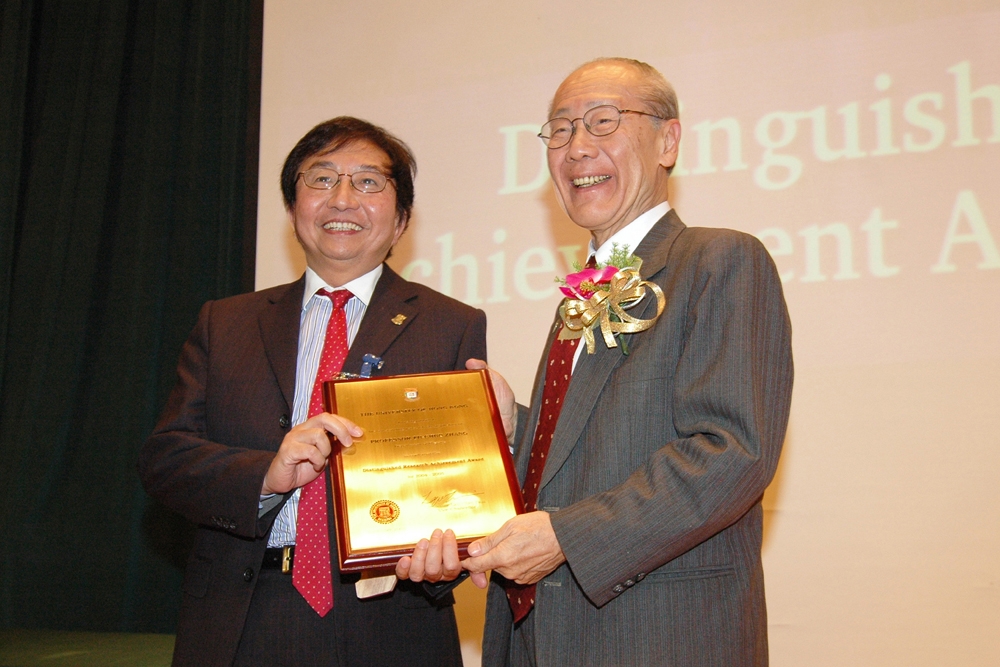
Djurisic, A.B. received the Outstanding Young Research Awards of the University of Hong Kong.
Mini-Course: Introduction to Quantum Many-body Theory - from the origin of phonons to an origin of photons --by Prof. X.G. Wen (MIT) jointly organized by HKU, HKUST and PSHK was held in January.
The Miniworkshop on Quantum Phase Transition and Spintronics by Prof. X.G. Wen (MIT) jointly organized by HKU, HKUST and PSHK was held here in July.
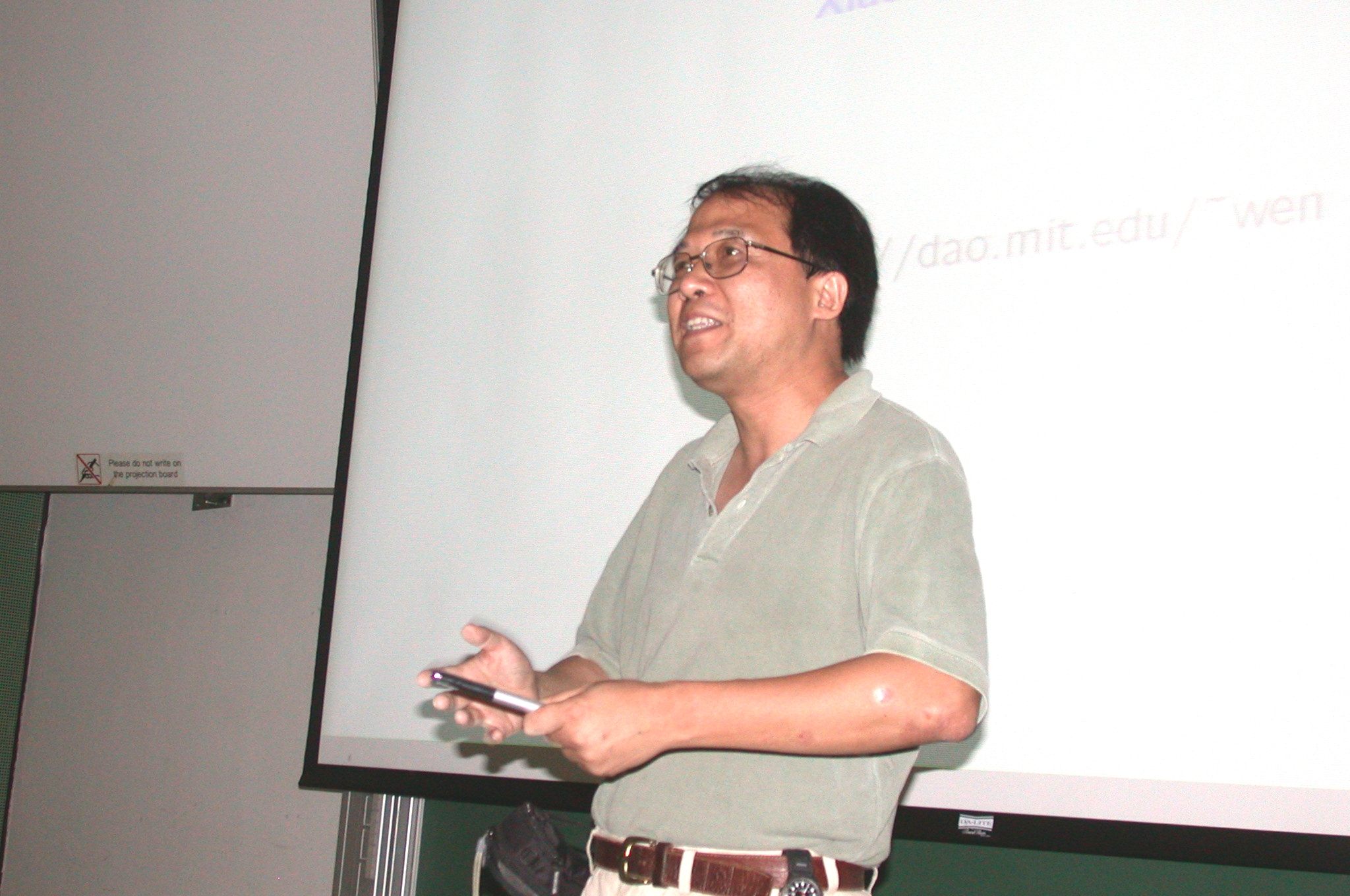
Cheng, K.S. was elected as a Fellow of the American Physical Society (Division of Astrophysics).
International Workshop on Computational Methods for Nanoscale Systems was held here in December.
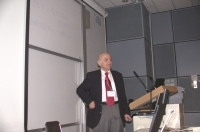
Hong Kong Forum of Physics: Frontiers in Condensed Matter jointly organized by HKU and HKUST was held here in December.
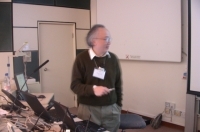
Wang, Z.D.. received the Croucher Senior Research Fellowship of 2007.
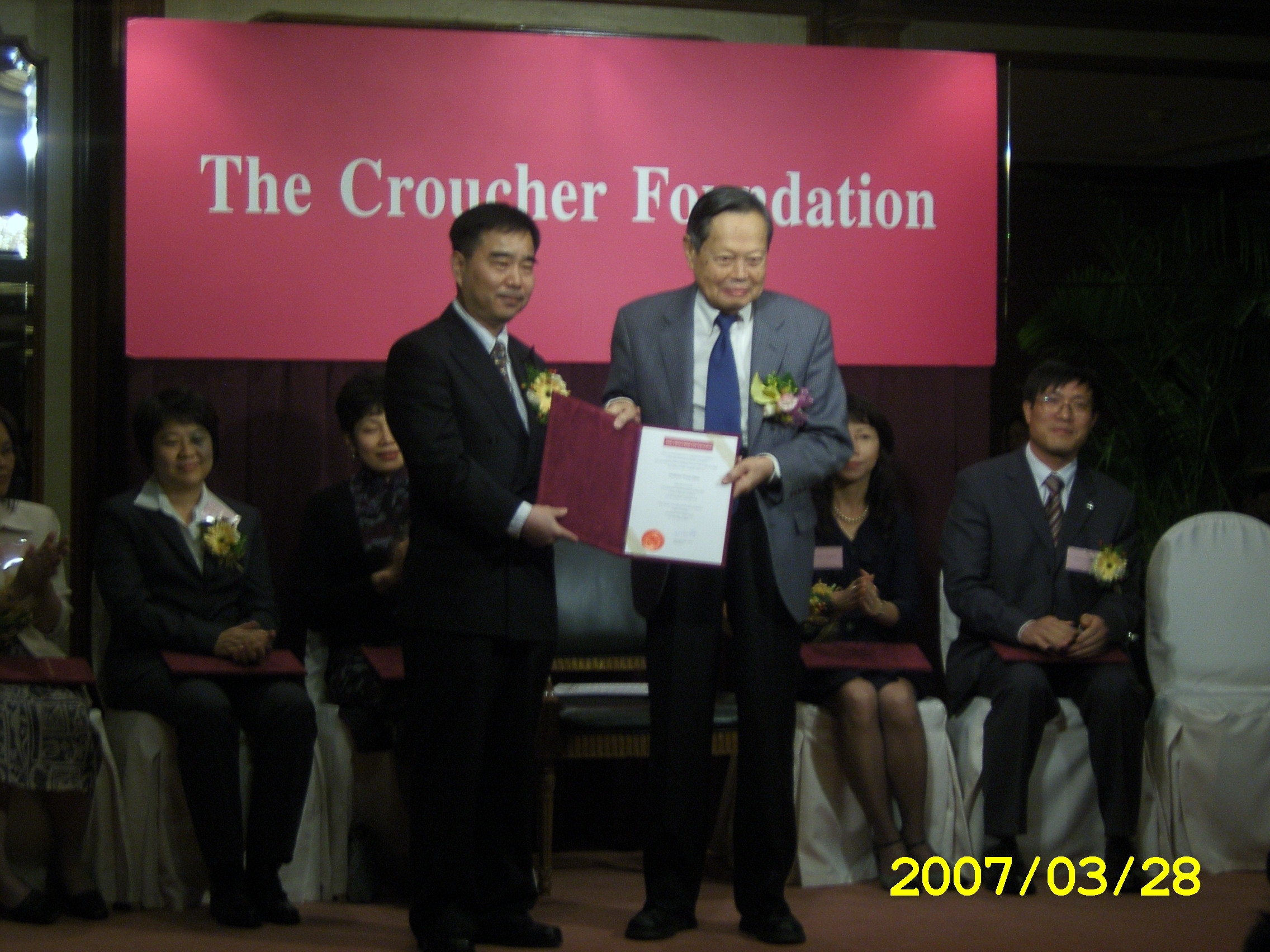
The Daya Bay Collaboration Meeting was held here in January
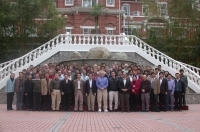
IAU Symposium was held in February.
Overseas Chinese Physics Association (OCPA) Workshop on Underground Science was held in July.
Hong Kong Forum of Physics 2008 - Quantum Matters and Quantum Simulations was held in December.
Zhang, F.C., as the project coordinator, was awarded with the Area of Excellence Project funded by the UGC.
Wang, J. received Croucher Senior Research Fellowship 2009 and Outstanding Researcher Awards of the University of Hong Kong.

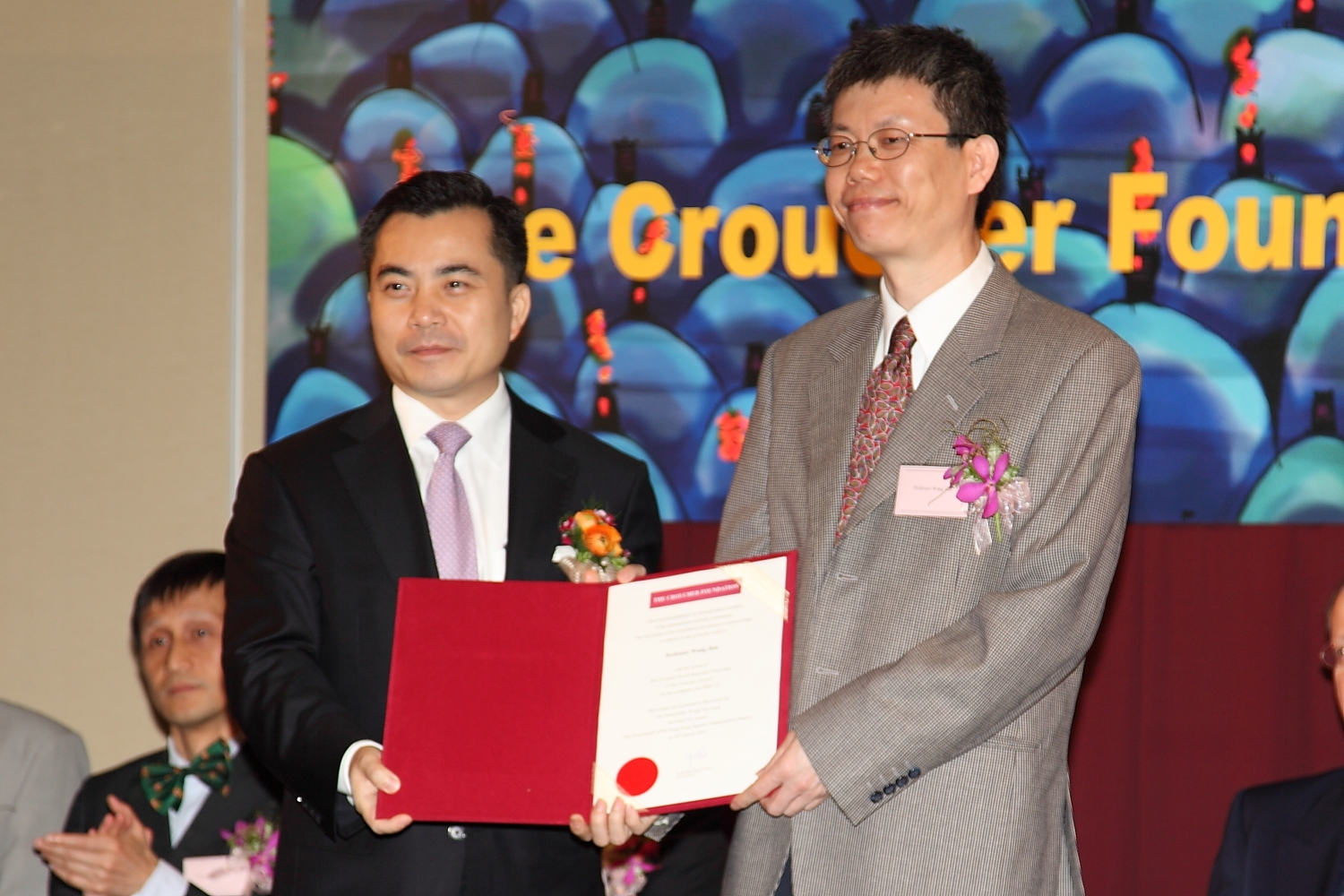
Zhang, F.C.. chaired 2009 Gordon Research Conference on Superconductivity held in June 2009 in HKUST.
A workshop titled “Novel Topological States in Condensed Matter Physics” was held in June.
Student Workshop entitled "Monte Carlo Methods -- An Introduction" (9-10 July, 2009) was held in July.
The 3rd International Workshop on Solid-State Quantum Computing & the Hong Kong Forum on Quantum Control was held in December.
Shen, S.Q. received Croucher Senior Research Fellowship 2010.
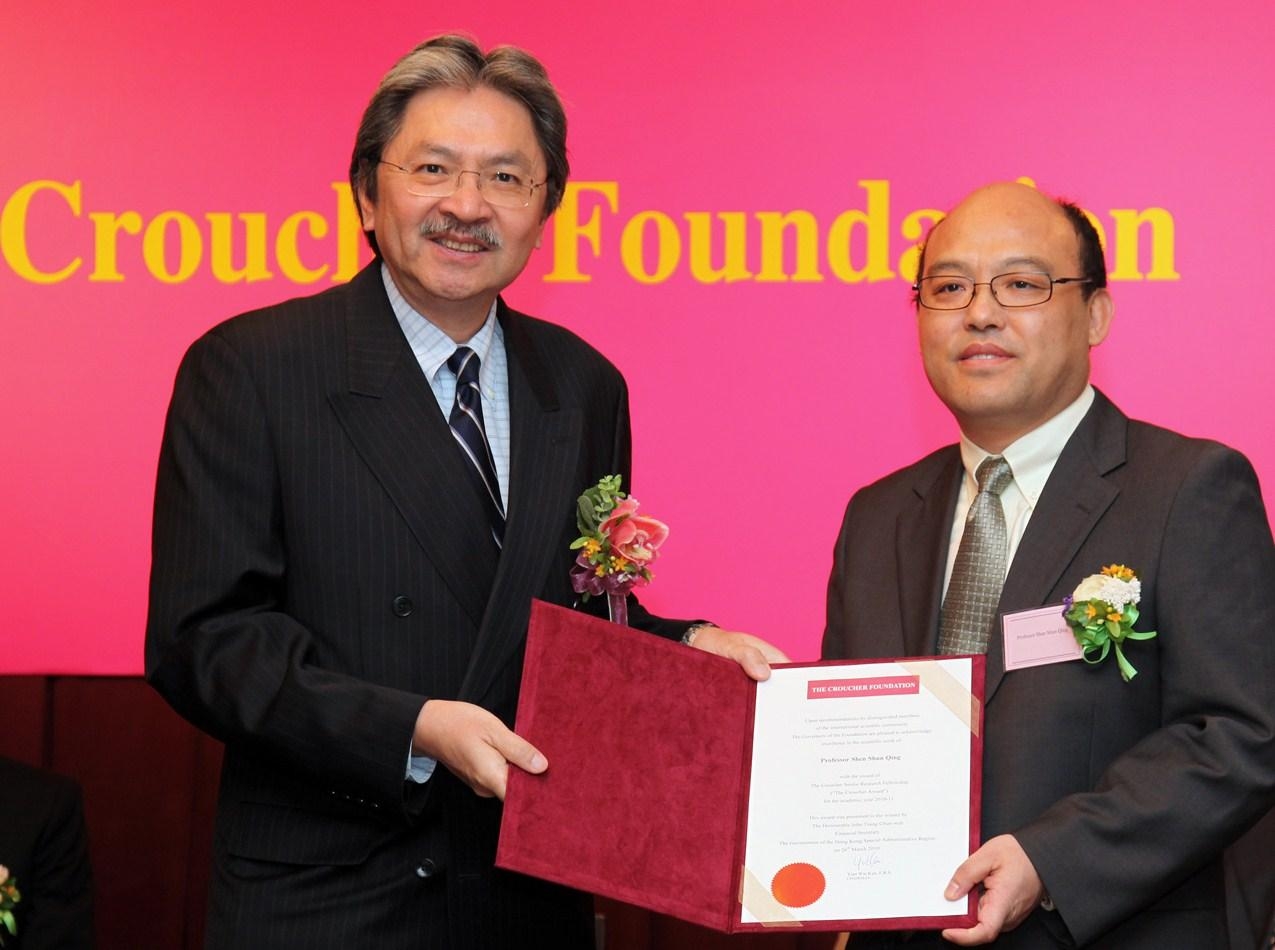
Cui X.D. received the Outstanding Young Research Awards of the University of Hong Kong. A mini-workshop on "Gamma-ray Sky from Fermi: Neutron Stars and their Environment" was held in June, 2010. Workshop on Simulation and Modelling of Emerging Electronics 2010 was held in December, 2010. Hong Kong Forum of Physics 2010: Novel Quantum States and Methods was held in December, 2010.
In Memoriam: Prof. Christopher Beling (1955-2010), valued colleague and friend of the Physics Department of HKU. He made many great contributions to the department and helped it move forward in numerous ways. His work here will not soon be forgotten.
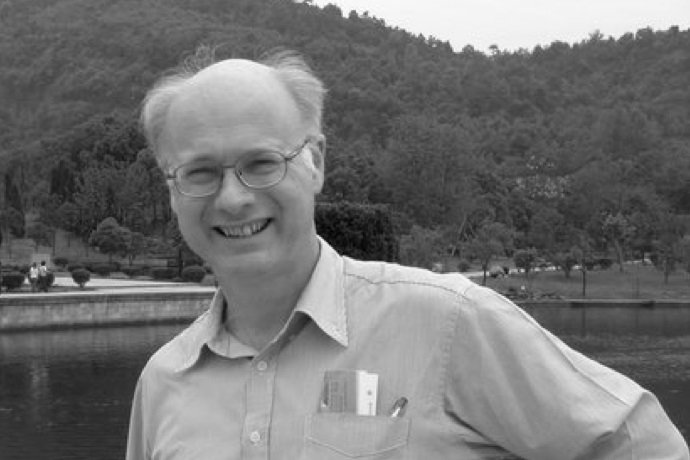
Zhang, F.C. was being chosen as the incumbent of the Zhou Guang-Zhao Professorship in Natural Sciences
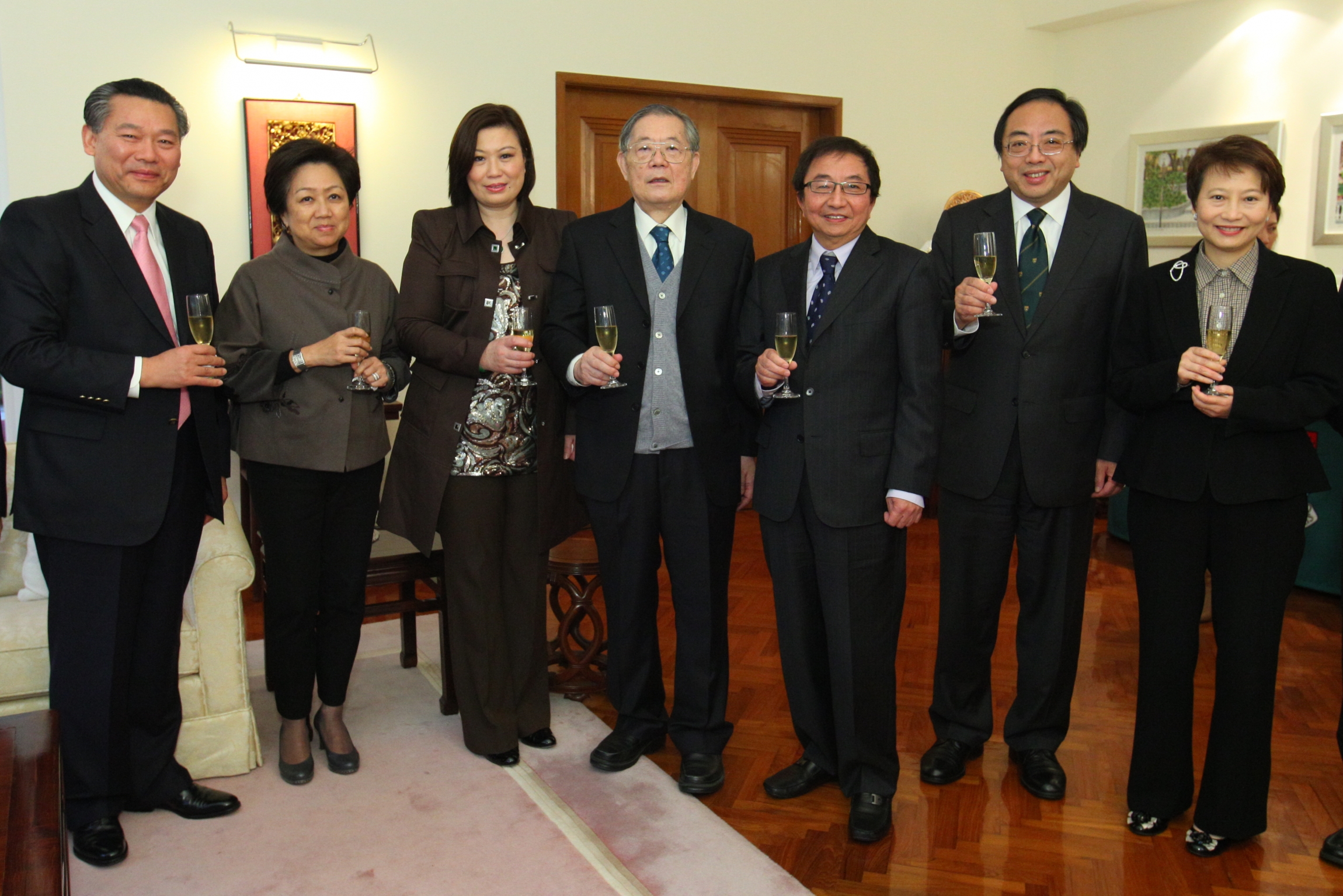
(from left) Dr. K.K. Chung, Mrs Laura Cha, Mrs K.K. Chung, Prof. G.Z. Zhou, Prof. F.C. Zhang, Prof. L.C. Tsui, Mrs C. Tse
Prof. P.K. MacKeown's book, "Early China Coast Meteorology: The Role of Hong Kong" has been chosen by the Atmospheric Science Librarians International (ASLI) as "2011 ASLI Choice" - History award for its account of the scientists and science that comprise the history and accomplishments of the Hong Kong Observatory.
[1] Matthewman, T H, M. Eng.; AMIEE: Lecturer 1912-13, (Professor 1913-14?).
Matthewman was one of the only 2 full-time member of teaching staff appointed by the University in its first year.
In September of 1912, it appears that he was passing through Hong Kong, having resigned from a position in Nanyang College, Shanghai (the forerunner of Jiaotong University) when he was offered the post.
He remained as the Lecturer in Physics in the Engineering Faculty in 1913/14, although other reports have him promoted to the Chair. Whichever was the case, this arrangement lasted for only a year, for by the beginning of the 1914/15 academic year, he had transferred to Professor of Electrical Engineering.
In 1918, he resigned.
Matthewman, after some service in the First World War, seems to have had a chequered career in academia, he was Professor of Electrical Engineering in Belfast, but from there, moved to Lahore and later became Principal of an Engineering College in Trivandrum.
[2] Warren, Arthur George, B.Sc. (Eng.) (London); AMIEE: Lecturer 1913-14, Professor and Head of Department 1914-19.
Besides Matthewman, Smith, C A Middleton was the other one of the 2 first full-time teaching staff in the University. Smith was the foundation (Taikoo) Professor of Engineering, together with Warren, then a lecturer in Engineering at Aston Technical School in England, had published what is almost certainly the first publication with a University of Hong Kong byline, "The New Steam Tables - together with their Derivation and Application" (London: Constable & Co., 1913).
By the beginning of the 1914/15 academic year Warren was promoted to Professor of Physics in both the Arts and Medical Faculties, and moved from his lectureship in Machine Design to an endowed Chair, Ellis Kadoorie Professor of Physics, in the Engineering Faculty.
Warren retained his three chairs of physics until 1918, in that year, on Matthewman's resignation, transferring to the Chair of Electrical Engineering (but he continued to act as Professor of Physics in the three Faculties until the arrival of a new professor in early 1920).
In 1921, Warren left to do research in the British Military Arsenal at Woolwich. He worked on X-ray photography of metals, and by 1930 he was a Fellow of the Institute of Physics. In 1939 he published a substantial textbook, "Mathematics Applied to Electrical Engineering", in a series of monographs on electrical engineering. It appears to have been quite successful, passing through six impressions followed by a second edition (London: Chapman & Hall, 1958).
Warren, on his departure could take up a full time research position in the Woolwich arsenal where he worked on X-ray photography of metals, published papers in theoretical mechanics and finally produced his text-book in 1939.
[3] Florance, David C H, M.A., M.Sc. (Canterbury and Manchester): Professor and Head of Department 1919-23.
Florance had been a front line participant in the new physics. Originally from New Zealand, he had published an important paper on gamma-ray interactions in matter in Phil. Mag. in 1910, a paper for which a search in today's Science Citation Index will still not yield a zero return. Before the First World War he studied with Rutherford at Manchester, where he was a Demonstrator and Lecturer. In that laboratory, he was one of the illustrious group of workers under Rutherford's wing, which also included Andrade, Geiger, Marsden, Mosley and others. He may not have been the most distinguished member of this group but the following extract from I B N Evan's biography of Rutherford, "Man of Power", (London: The Scientific Book Club, n.d.) gives an indication of the importance of his work:
... Guy and Florance examined the gamma-ray scattering from lead and provided from their results the first slight indication of the Compton effect.
We can certainly say that he brought with him to Hong Kong a familiarity with developments in physics well in advance of anyone else around. One doubts that he could have expected to undertake serious experimental research here at the time, something that would have been confirmed on his arrival, and his taking up the post must be seen as a stepping-stone on his eventual return to New Zealand. This he did within a few years, in 1924 becoming Professor of Physics at Victoria University College, Wellington - he had already been somewhat removed from frontline research having volunteered and served 4 years in the army in the First World War.
[4] Faid, William, M.Sc.(Durham): Professor and Head of Department 1924-44.
30 years old at that time, Faid had a B.Sc. and M.Sc. from the University of Durham (Kings College) and had been a Lecturer in that University before his appointment.
Faid, who was Dean of Arts for a year in 1931, took a lot of interest in running the hostels and acted at different times as Warden of Eliot Hall and of Lugard Hall. From 1934 his wife, Jean, was variously a part-time lecturer and a full-time lecturer on local terms in the Mathematics Department.
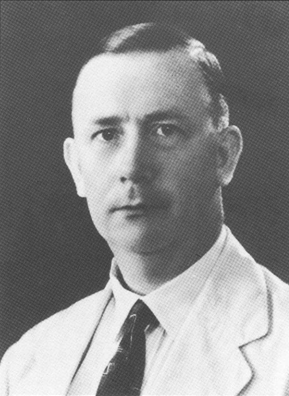
Both Faid and Davies became involved with the state-of-the-art radiotherapy equipment acquired by the newly opened Queen Mary Hospital in 1938. Faid was appointed Hospital Physicist and a member of the Hospital Radiation Centre.
Then the second world war came. At the outbreak of fighting, the University became the University Relief Hospital and Faid was its Lay Superintendent. He and his wife were interned in Stanley Camp, where he died, in July 1944, having fractured his skull after falling from a roof. He is still remembered by the "William Faid Memorial Prize in Physics" awarded annually to the student passing at first attempt the Final B.Sc. examination obtaining the best result in physics.
Mrs Faid returned after the War and taught in the Mathematics Department for a few years - she is the only member of staff listed in that department in 1946/47.
[5] Davies, D F, B.Sc.(London); M.A.(Oxford); F.Inst.P.: Lecturer 1928-45, Professor and Head of Department 1947-52.
Davies, in fact, applied for a study-leave extension to his long leave in 1937 with the ambitious hope of furthering his studies in Low Temperature Physics in the Clarendon Laboratory under Lindemann. His application was rejected by Council, in part because of the lack of formal arrangements at that time for such study leave, and possibly because of his lowly status - most recognized research in the University was by professors in the Medical Faculty. Both Faid and Davies became involved with the state-of-the-art radiotherapy equipment acquired by the newly opened Queen Mary Hospital in 1938. Davies spent an extra three months study leave that year at the Royal Cancer Hospital in London familiarizing himself with the equipment and methods for calibrating radiation doses.
During the second world war, since Davies was part of the Royal Navy Volunteer Reserve and so, as a combatant, became a prisoner of war. He escaped, however, from Shamshuipo Prisoner of War Camp and made his way in the company of the professor of physiology Lindsay Ride - the first postwar Vice Chancellor - into China and on to India where he spent most of the war.
When the University reopened in 1946, Davies had already returned to Hong Kong as part of the British Military Administration after the Japanese surrender in 1945. However, when he resumed duties in the University in 1946 his workload left little room for physics department concerns as he acted sometimes as Registrar, Dean of Medicine and Dean of Science. In part due to his contacts with the Administrative Authorities, he was a very influential figure in getting the Institute on its feet again, a fact little noted in the canonical histories of the University. In 1947 he became Professor of Physics and in 1948 Dean of Science. This should have heralded a bright era for the Department.
Although Davies had shared with Lindsay Ride some of the vicissitudes of wartime, they apparently did not see eye to eye on many matters, and the Vice Chancellor appointed Un as Head of Department in May 1952, and Davies was encouraged to leave the University.

[6] Un, Po, M.B.E.; B.Sc. (H.K.): Demonstrator 1920-48, Assistant Lecturer 1948-53, Lecturer 1953-59, Acting Head of Department 1952-54.
Un was an Engineering graduate of the University, the first alumnus to be employed, and was to play a pivotal role in the teaching of physics, serving at a later stage as Head of Department. He was in the first intake class into the University, the start of an association that would last on and off for 47 years until his death in 1959. He graduated in 1918 after a lapse of an academic year due to ill health, and taught briefly at Queen's College before becoming the first graduate to be appointed to the teaching staff of his alma mater.
Chan, Chau Lam and Un were appointed as Demonstrators in Physics and Chemistry in the Engineering Faculty in 1920. From 1928 onwards, Chan became specifically Demonstrator in Chemistry while Un's demonstration duties were confined to physics (Arts and Engineering Faculties).
During the second world war, Un, very early, moved into China and was Associate Professor of Civil Engineering in the National Sun Yat Sen University, at the time in exile in northern Guangdong, moving with them to Guangzhou when the War ended in 1945.
Un was appointed as Head of Department in May 1952.
Already 39 years in the service of the University, Un died, still in service, in early 1959; along the way he had acquired the unflattering nickname of 元寶, and an MBE award, and in the end the yellowness of the notes from which he lectured was a measure of how long he had been teaching the material.
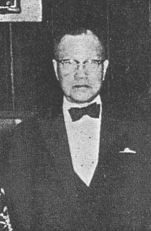
[7] Hui, Pak Mi, B.A. (HK); Ph.D (London); A.Inst.P.: Demonstrator 1933-49, Assistant Lecturer 1949-53, Lecturer 1953-63,Senior Lecturer 1963-66.
Hui hailed from an illustrious South China family - his grandfather was a Ching Viceroy of the provinces of Fujian and Zhejiang. He was a graduate of the Arts Faculty. He rounded off the team that paved the way for the Department to join the new Science Faculty in 1939.
During the second world war, Hui escaped to Macau, where he stayed, with his family, but without a job, until the end of the war.
Hui went on leave to study for a Ph.D. working under Prof. E N da C Andrade at the University of London in 1948, and came back in 1951 to take up his Assistant Lectureship. He had obtained his Ph.D. degree on the strength of a thesis entitled 'Viscosity and Density of Supercooled Liquids'. He was to be a pivotal figure in the Department until his retirement in 1967, especially contributing to the organization of the AL Examinations. Although basically, a retiring individual, who kept a low profile in the runnng of the Faculty, he was widely read and a great talker when in like-minded company. He regularly composed couplets on the blackboard in the Tea Room in the Northcote Science Building, sometimes to be completed by others of those present. At one stage he was coach of the University swimming team and, apparently a non-swimmer himself, used a text-book for the purpose! His lecture notes, in minute detail, he copied word-for-word on to the blackboard. By spotting newly added paragraphs when compared with notes from the previous year's class, some students were at an advantage when the examinations came around.
Hui had been awarded an M.B.E. decoration in 1964, and his long service to physics in Hong Kong recognized by election to Chairman of the Physical Society. He was appointed as an Honorary Research Fellow in the Department on his retirement, but sadly only survived a further year. The "P M Hui Memorial Scholarship" in the Faculty perpetuates his memory.
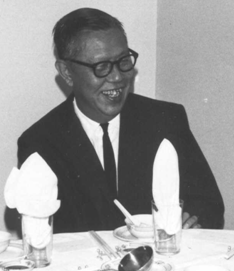
[8] Yue, Shui Chiu, B.Sc(Eng.) (H.K.): Demonstrator 1939-41, 1951-55.
Yue was an Engineering graduate of 1921 who had previously acted as a Demonstrator in Engineering.
[9] Cook, E O, M.Sc., D.Phil(Oxford): Lecturer 1946-48.
Cook had a D.Phil. from Oxford. He was the first member of staff to hold a doctorate degree.
[10] Parsons, Ralph Whaddon, B.E. (Adelaide); D.Phil. (Oxford); F.S.A.S.M.; F.Inst.P.: Professor and Head of Department 1954-59.
Parsons had been working on cosmic ray interactions using balloon borne emulsions at the University of Melbourne. His original degree in Electrical Engineering from the University of Adelaide had led him into the field of accelerator design, and he had pursued that field leading to a D.Phil. degree from Oxford for X-ray studies of the binding energy of heavy nuclei in 1951. Within a couple of months of his arrival, Parsons had given his inaugural lecture, choosing for his theme the glamour subject of the time, "Some recent developments in Nuclear Physics". In fact, it was more concerned with what we would now call particle, or high energy, physics, describing balloon borne emulsion techniques and the spate of discovery of new particles around that time. Further evidence of Parsons' dynamism can be seen in the totally rewritten syllabus ready for the Calendar of 1954/55, with a section on Atomic Physics including Bohr's theory in First Year, and the inclusion of special relativity, wave mechanics and elementary nuclear physics in the degree listing. He bought a neutron source from Harwell, and introduced a selection of experiments on nuclear physics into the teaching laboratories. Harry Massey and M H L Pryce were among the External Examiners appointed around this time and subsequently. Parsons is still remembered for the clarity and conciseness of his printed lecture notes, as well as for the fact that he always was attired in a white shirt and tie but never wore a jacket. Through the University Press, he published a booklet, "Practical Physics" which sold at $8 a copy and had wide distribution; originally written for the Preliminary Science year at the University, it later took on the nature of the bible of A-level students of that time.
The first refereed publications with the departmental byline were two papers in conjunction with Parsons publibished in the Journal of Scientific Instruments and Proceedings of the Physical Society (London) in 1957 and 1958.
Parsons eventually returned to his native Australia, to a readership in the University of Queensland, in which University system he remained, working mostly on molecular spectroscopy, until retirement.
Another two and a half years intervened before a new professor arrived - strictly one and a half years, but for all of his last year in the Department Parsons was on study leave at the University of Saskatchewan on a fellowship awarded by the Canadian Research Council.
[11] Chik, Kin Pong, B.Sc.(Hons)(H.K.): Demonstrator 1958-61.
Up until 1959, a B.Sc. Honours degree was in principle possible by taking an additional year (a total of five years if one included the Preliminary Year), the first to take it in physics were Chik and Kwan, Sik Hung.
Chik is still a Faculty member at the Chinese University.
[12] Kwan, Sik Hung, B.Sc.(Hons)(H.K.): Demonstrator 1958-60.
Kwan later worked at Hong Kong Polytechnic University.
[13] Chesterman, William Deryck, D.Sc.(Bristol); F.Inst.P.; F.R.P.S.: Professor and Head of Department 1961-66.
A graduate of Bristol, 1934, Chesterman was a specialist in acoustic methods, especially as applied to oceanography. He was the author of a well-regarded monograph, The Photographic Study of Rapid Events (Oxford: Clarendon Press, 1951) and an internationally recognized authority on high speed photography. He already held a D.Sc. degree from Bristol, and had spent the previous twenty years with the British Admiralty, but was apparently without experience of running a teaching department. His Inaugural Lecture, in November 1961, was titled 'Physics and the Study of the Sea'. He devoted quite a bit of it to outlining his plans for the Department, and addressing the Vice Chancellor on the associated costs - there already was a Research Grants Committee in the University, and the total amount it administered that year to be shared among all departments was $41,500. He emphasized the importance of doing research which was unique to Hong Kong, citing his own projected studies of the local continental shelf as well as the low geomagnetic latitude advantages for studying cosmic rays - as noted above, Wang, C P was embarking on measurements of muon intensities at the time. He talked about establishing a postgraduate school in Physics and wrote 'there must be an entirely different concept of the importance of research in our educational plan for the University' and 'we shall need to expand the teaching staff (including demonstrators) from the present figure of twelve to a total of seventeen in the next four or five years'. He did have some personal success in getting his marine studies under way - a shoal discovered in the Lamma Channel was named the Chesterman Rock after him. However, the failure to make much progress on the issues he raised, although he was elected Dean of the Faculty in 1965, may account for his departure within five years, invited by the new University of Bath to establish a Marine Geophysics Unit in the School of Physics.
[14] Ng, Leung Kai, MSc (H.K.); Ph.D.(British Columbia): Demonstrator 1961-64, Lecturer 1969-81, Senior Lecturer 1981-84, Reader 1984-93.
Ng was one of the first 4 graduates receiving the Special Honours degree in 1961.
The first Masters degrees for work done in the Department were awarde simultaneously to Ng and Lee in 1965. Ng's project was the development of an experimental system to study double beta decay which involved the construction of a 64 channel pulse height analyser.
Ng returned from the University of British Columbia where he had done his Ph.D. in experimental nuclear physics in 1969. He was particularly competent in electronics, a subject he taught and fostered in the Department for many years - before everything was reduced to chips, the Department housed a sizeable Electronics Laboratory, which also accommodated the Science Faculty electronics technician.
Ng moved to Canada upon retirement in 1993.
[15] Yu, Miu, Robert, B.Sc.(Special) (H.K.); Ph.D. (Bristol); M.Inst.P.; F.G.A.: Demonstrator 1961-62, 1963-64, Lecturer 1967-84.
Yu was one of the first 4 graduates receiving the Special Honours degree in 1961. Yu returned with a Ph.D. from Bristol in 1967.
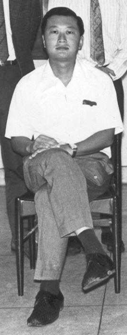
[16] Lee, Hinglun, Alan, B.A.(International Christian, Tokyo): Demonstrator 1960-64.
The first Masters degrees for work done in the Department were awarde simultaneously to Ng and Lee in 1965. Lee constructed a counter telescope that measured variations in the cosmic ray muon intensity.
[17] Chan, Yin Lui, Yinia, B.Sc.(H.K.): Demonstrator 1966-67.
The first Ph.D. from the Department was awarded to Chan in 1966. Her thesis was entitled 'Acoustic Surveys of the sea floor near Hong Kong'. This work was done in Chesterman's group.
[18] Lyon, Arthur James, M.A., Ph.D. (Edinburgh); F.Inst.P: Professor and Head of Department 1967-77.
Lyon brought with him an interest in the ionosphere that matched up well with the work already under way by Walker. He had done his postgraduate studies in Edinburgh under the acknowledged guru of ionospheric studies, the Nobel Laureate Sir Edward Appleton, and obtained his Ph.D. there in 1956. For the next 11 years he was at University College, Ibadan in Nigeria, five years as Head of Department, where he had an opportunity to become familiar with the equatorial ionosphere. His Inaugural Lecture, given in November 1967, was titled 'The Upper Atmosphere at Low Latitudes'. Long, it runs to 11 pages and two plates in the Supplement to the Gazette, it is mainly technical, explaining the nature of the ionosphere and results from the work in Ibadan and the work in progress on Mount Davis. With Walker and a new lecturer, David Rivers, ionospheric and geomagnetic studies were to last, at various levels of activity, up to Walker's retirement in 1993.
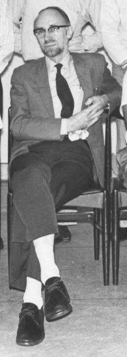
[19] Walker, George Oulton, M.Sc. (Leeds); A.Inst.P.: Lecturer 1962-68, Senior Lecturer 1967-92, Reader 1992-93.
From Brunel University, Walker was to stay with the Department for 31 years.
Walker moved to England upon retirement in 1993. Apart from his devotion to the Advanced Laboratory and monitoring the ionosphere, his hosting of an annual Christmas party in the, now demolished, old house on University Path (and later in 'Buckingham Palace' on University Drive) was one of the Department's social events of the year.
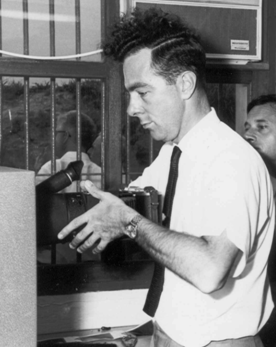
[20] Newman, Douglas John, B.Sc., Ph.D., D.Sc. (London); A.R.C.S.; F.Inst.P.: Professor and Head of Department 1979-89.
Newman came to us via the Institute of Advanced Studies of ANU having earlier taught at Queen Mary College of the University of London. His arrival heralded a new emphasis in the Department; for one thing, in contrast to all previous heads, he was very much a theoretician - he had actually done his undergraduate degree in mathematics - with a particular interest in group theory - he had co-authored a small book on the subject - with applications to crystal field theory in particular. He also brought with him a conviction of the importance of research and publication in the Department. It was the Department's first introduction to the modern 'physics culture' and, not surprisingly, it was not entirely enthusiastic in embracing it, and some stormy episodes were to follow. His Inaugural Lecture, The Scientific Future, given in October 1980 dealt, in general terms, with the nature of scientific progress, its future development and its role in human progress.
He married one of the graduate students, Betty Ng, and was leaving a year ahead of retirement. At his farewell reception he gave a valedictory address, of which no written record is to hand, but which those present on the occasion will not readily forget.
[21] Reid, Michael F, B.Sc., M.Sc., Ph.D. (Canterbury): Lecturer 1985-92.
Reid, was of a new generation, fully at home in the modern 'computer culture' and, aided by the technician Yip Kin Hang, did much to bring the Department into the cyber age
[22] Fung, Chin Wan, Peter, B.Sc., Ph.D. (Tasmania); M.Inst.P: Lecturer 1970-75, Senior Lecturer 1975-80, Reader 1980-84, Professor 1984-99, Head of Department 1989-90, 1992-94.
Fung had done his Ph.D. work in Hobart and had held post-doctoral appointments at Montreal and Stanford. A paper by him in 1970 in the journal Plasma Physics was the first (of many) theory publications from the Department.
On the discovery of high temperature superconductivity in the late eighties, Fung, Peter diversified into experimental physics, setting up a laboratory to study this topic, as well as photoacoustic phenomena that would eventually lead him into medical physics research.
Peter Fung throughout these years had been very active in theoretical research, and gained a personal chair in 1984. On the discovery of high temperature superconductivity in the late eighties, Peter diversified into experimental physics, setting up a laboratory to study this topic, as well as photoacoustic phenomena that would eventually lead him into medical physics research. He acted as Head of Department during the period between Doug Newman's departure and the appointment of a new chair professor.
Fung retired in 1999 and left the Department to take up the first Chair of Medical Physics in the University and continue his researches in the Medical Faculty
[23] Chau, Wai Yin, B.Sc.(HK); Ph.D.(Columbia): Professor and Head of Department 1990-92.
Chau was the first alumnus to hold the Chair. He had been Head of the Department of Applied Physics at the Hong Kong Polytechnic, while on secondment from Queens University in Canada, where he was a Professor of Physics, prior to his appointment. He had graduated in the Mathematics Department and done a PhD at Columbia, later working on theoretical astrophysics. He was a popular Head of Department, ever conscious of the need for high morale among all levels of staff in the Department and his, ambivalent, decision to return to Canada after only two years was regretted by many.
[24] Chan, Chau Lam, B.Sc.(Eng.) (H.K.): Demonstrator 1920-28.
Chan and Un were appointed as Demonstrators in Physics and Chemistry in the Engineering Faculty in 1920. Chan became specifically Demonstrator in Chemistry in 1928.
Reference:
An Anecdotal History of the Department by Prof. P.K. MacKeown
Attachment :


